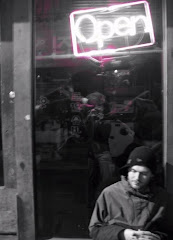Paul, our Tuk Tuk driver took us out from the guesthouse, through midday Phnomn Penh traffic and along the unsealed dusty road that leads out of the capital. The Same route that was travelled by the condemned in trucks from security prisons in the city.
We arrived in the almost empty dirt yard that acted as a car park and went off and got our admission tickets. As we walked into the site, it initially looks like a park or a peaceful recreation spot, with no immediately obvious signs of the horrors that occurred there. In the background were the noises of local children playing at a school. In front of us stood a large gold topped stupa. As we got closer, it quickly became apparent that this huge structure was absolutely crammed from top to bottom with the skulls of some of the 9000+ people that had thus far been exhumed from the mass graves at the site.
We arrived in the almost empty dirt yard that acted as a car park and went off and got our admission tickets. As we walked into the site, it initially looks like a park or a peaceful recreation spot, with no immediately obvious signs of the horrors that occurred there. In the background were the noises of local children playing at a school. In front of us stood a large gold topped stupa. As we got closer, it quickly became apparent that this huge structure was absolutely crammed from top to bottom with the skulls of some of the 9000+ people that had thus far been exhumed from the mass graves at the site.
We spent some time inside the structure, completely shocked by the site. The cases and shelves containing the skulls are open, and tower, stories above you. The extremely narrow passageway that runs between the outer wall of the stupa and the cases of skulls means that you have no choice but to be inches from the thousands of skulls. Plastic signs request that you don't touch them. They are arranged by sex and approximate age at death. The point at which we entered brought us in front of hundreds of skulls of those aged 5 -9.
We left and started to walk around the site. Various information boards told of where buildings once stood, containing chemicals used in an attempt to subdue the smell, as well as kill any of the victims who were only stunned by the blows inflicted on them. Signs around the site requested that we didn't walk on the still unexcavated mass graves.
We came across a large tree with a thick branch running perpendicular to the trunk, on it hung a sign telling of how the Khmer rouge soldiers used the branch to hang a loudspeaker playing music at a decibel level high enough to drown out the cries and screams of the children who were being beaten to death against the trunk. Against this same trunk today were stacked piles of fractured bones that had been found on the ground nearby since the fall of the Khmer Rouge.
As we walked around the unkept paths we could see pieces of bone, teeth and clothing embedded in the ground all around us. As Cambodia had slowly forged itself a position on the backpackers trail, the number of visitors to the site had been wearing away the earth of the makeshift pathways, slowly exposing the bodies buried just below the surface that we were inadvertently walking across.
A small acrylic sided box to the right of the pathway displayed a sign explaining that the contents was pieces of skeletons and personal effect that had been found around the site since the early excavations of the mass graves. As the box was fall and locked the lid was piled with many more pieces that visitors to the sight had found and placed there in the hope that one day someone may have the will and resources to catalogue them correctly.



















No comments:
Post a Comment